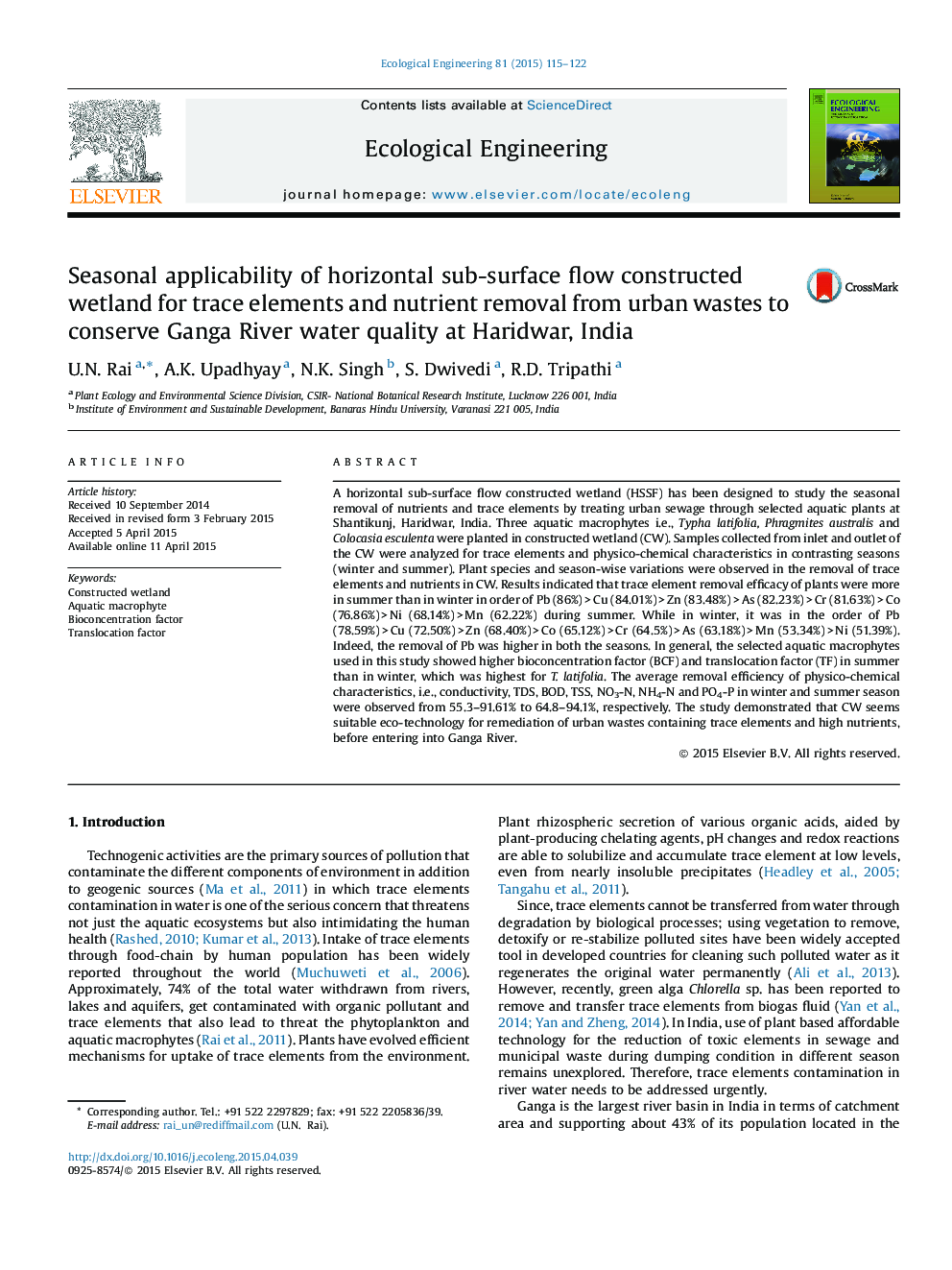| کد مقاله | کد نشریه | سال انتشار | مقاله انگلیسی | نسخه تمام متن |
|---|---|---|---|---|
| 4389064 | 1618018 | 2015 | 8 صفحه PDF | دانلود رایگان |
• HSSFCW removed up to 90% trace elements viz., Cd, Cr, Pb, As and Zn from sewage.
• HSSFCW showed higher treatment efficiency in summer than in winter.
• T. latifolia and C. esculenta showed high BCF and TF in summer.
• C. esculenta could be used as potential phytoremediator of arsenic pollution.
• HSSFCW efficiently decreased BOD by 90% from sewage after 36 h of treatment duration.
A horizontal sub-surface flow constructed wetland (HSSF) has been designed to study the seasonal removal of nutrients and trace elements by treating urban sewage through selected aquatic plants at Shantikunj, Haridwar, India. Three aquatic macrophytes i.e., Typha latifolia, Phragmites australis and Colocasia esculenta were planted in constructed wetland (CW). Samples collected from inlet and outlet of the CW were analyzed for trace elements and physico-chemical characteristics in contrasting seasons (winter and summer). Plant species and season-wise variations were observed in the removal of trace elements and nutrients in CW. Results indicated that trace element removal efficacy of plants were more in summer than in winter in order of Pb (86%) > Cu (84.01%) > Zn (83.48%) > As (82.23%) > Cr (81.63%) > Co (76.86%) > Ni (68.14%) > Mn (62.22%) during summer. While in winter, it was in the order of Pb (78.59%) > Cu (72.50%) > Zn (68.40%) > Co (65.12%) > Cr (64.5%) > As (63.18%) > Mn (53.34%) > Ni (51.39%). Indeed, the removal of Pb was higher in both the seasons. In general, the selected aquatic macrophytes used in this study showed higher bioconcentration factor (BCF) and translocation factor (TF) in summer than in winter, which was highest for T. latifolia. The average removal efficiency of physico-chemical characteristics, i.e., conductivity, TDS, BOD, TSS, NO3-N, NH4-N and PO4-P in winter and summer season were observed from 55.3–91.61% to 64.8–94.1%, respectively. The study demonstrated that CW seems suitable eco-technology for remediation of urban wastes containing trace elements and high nutrients, before entering into Ganga River.
Journal: Ecological Engineering - Volume 81, August 2015, Pages 115–122
